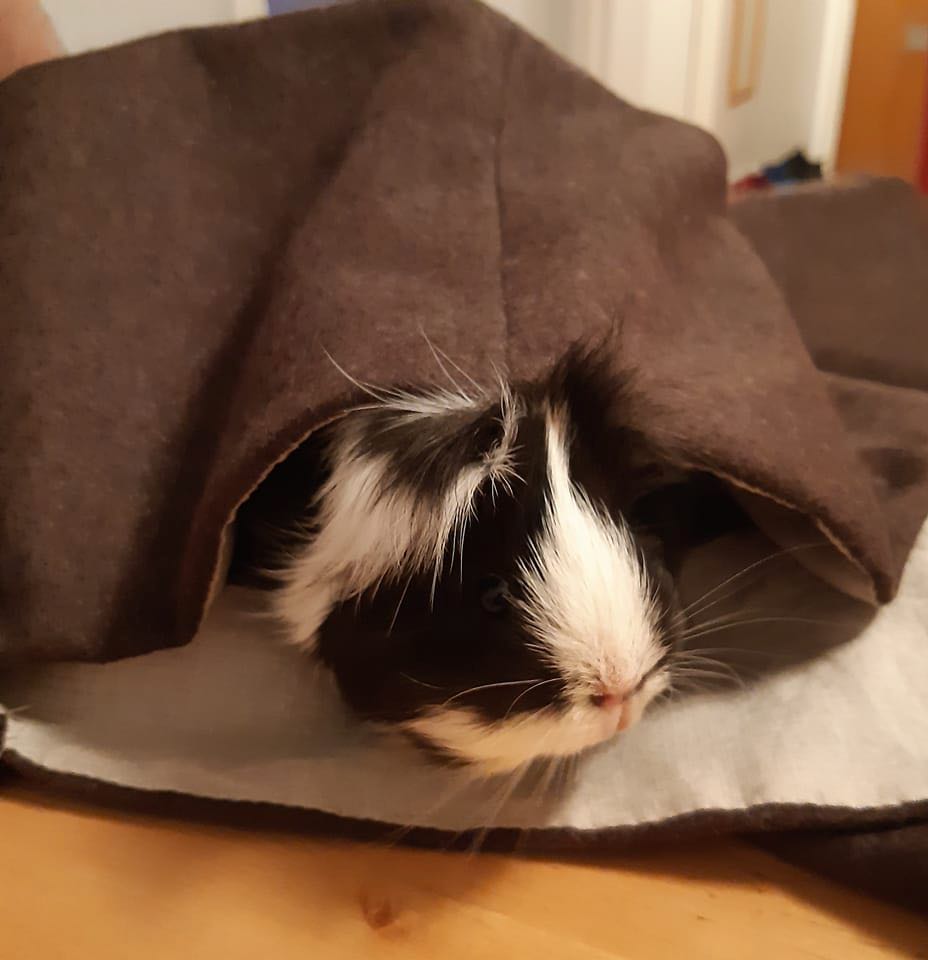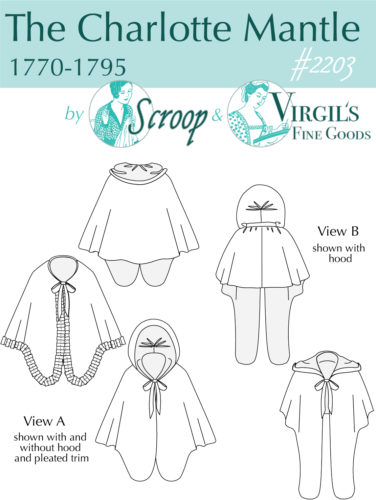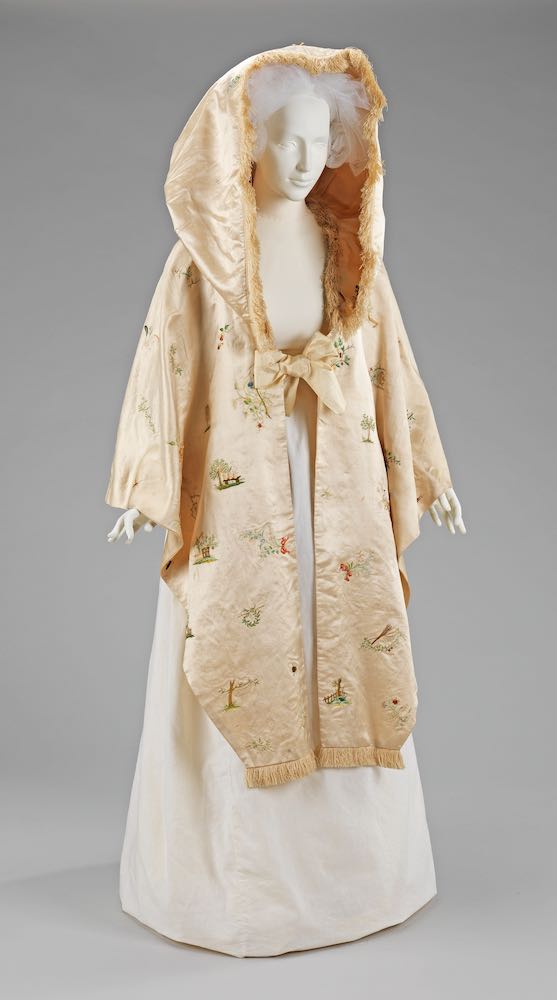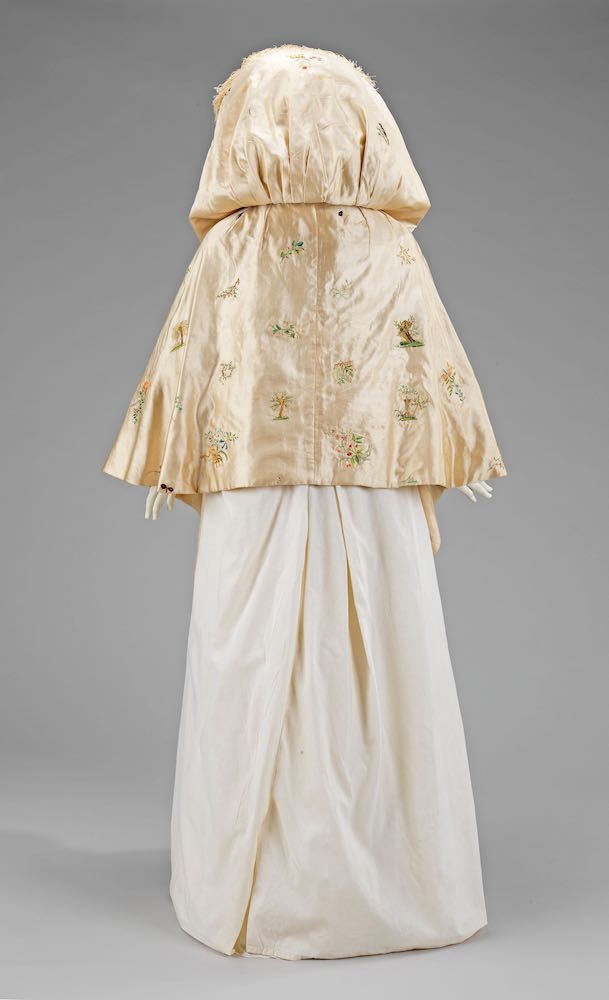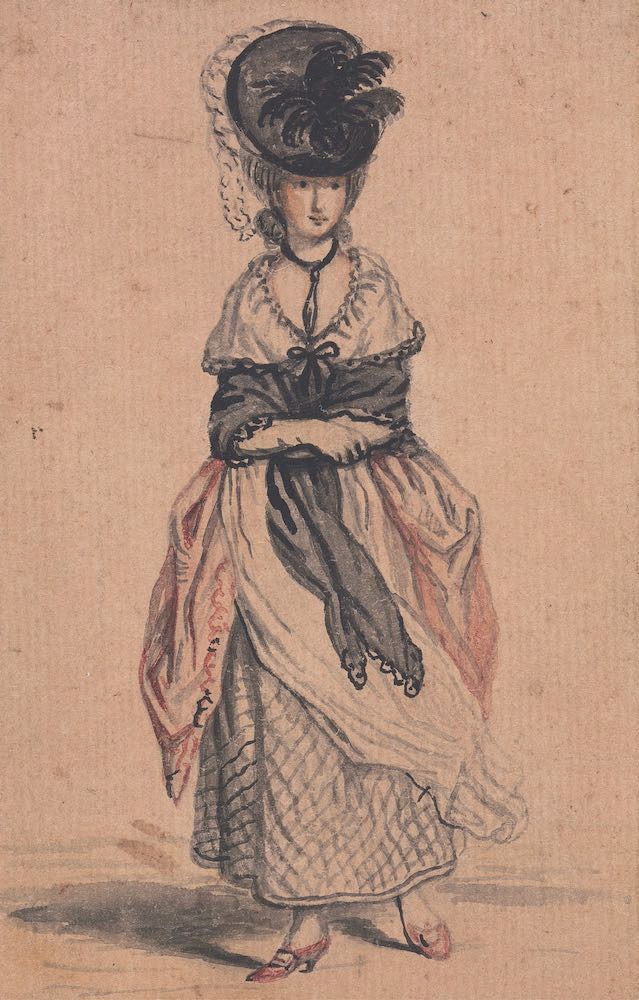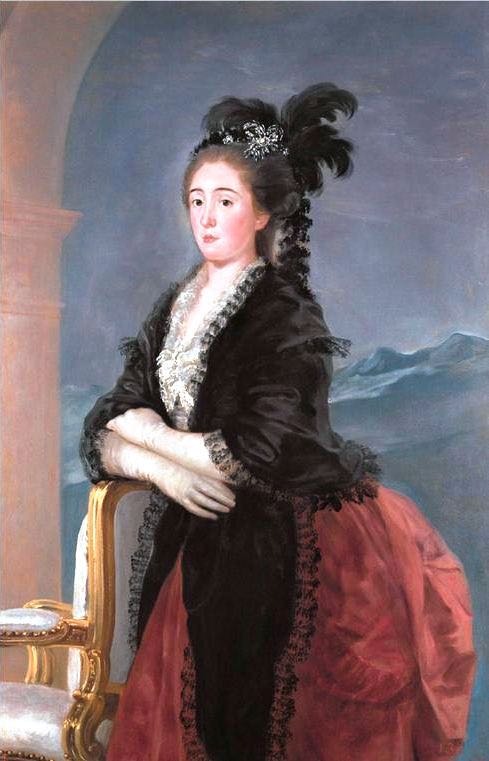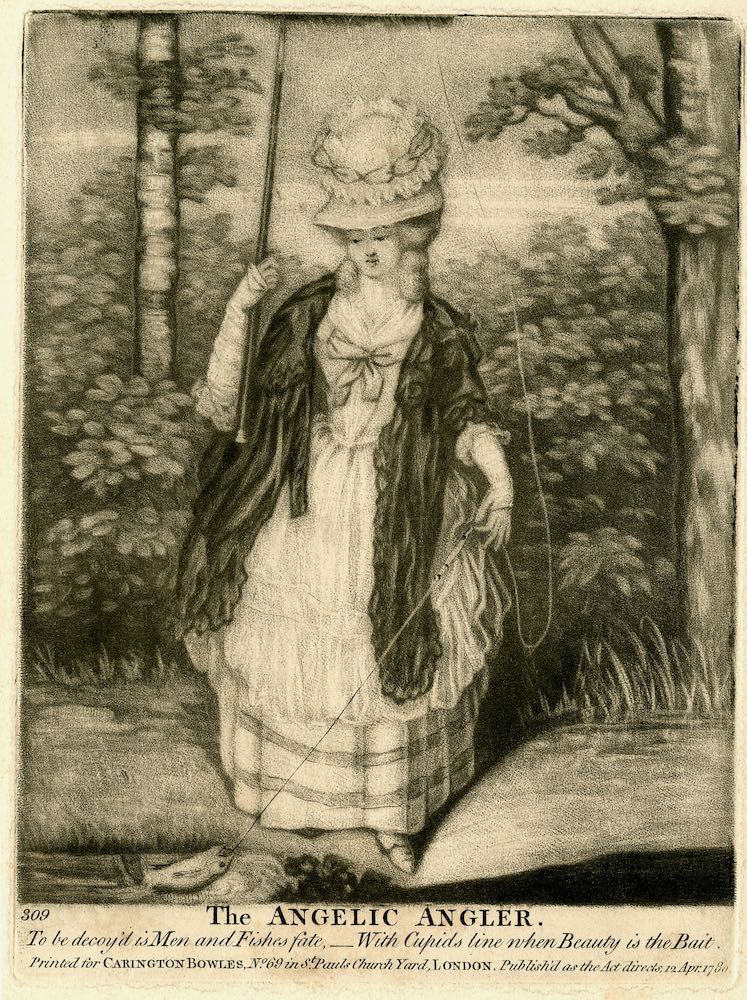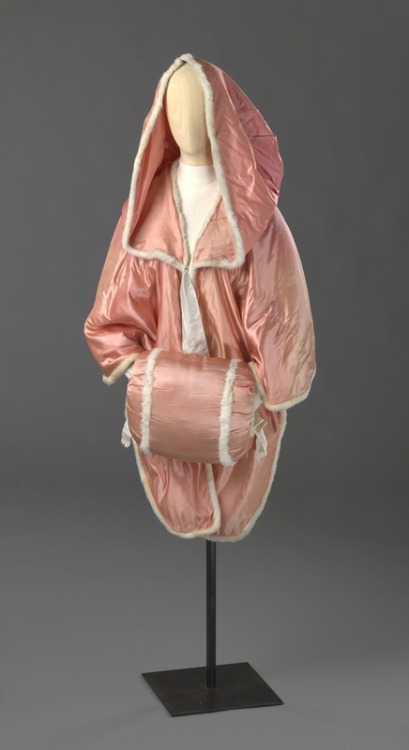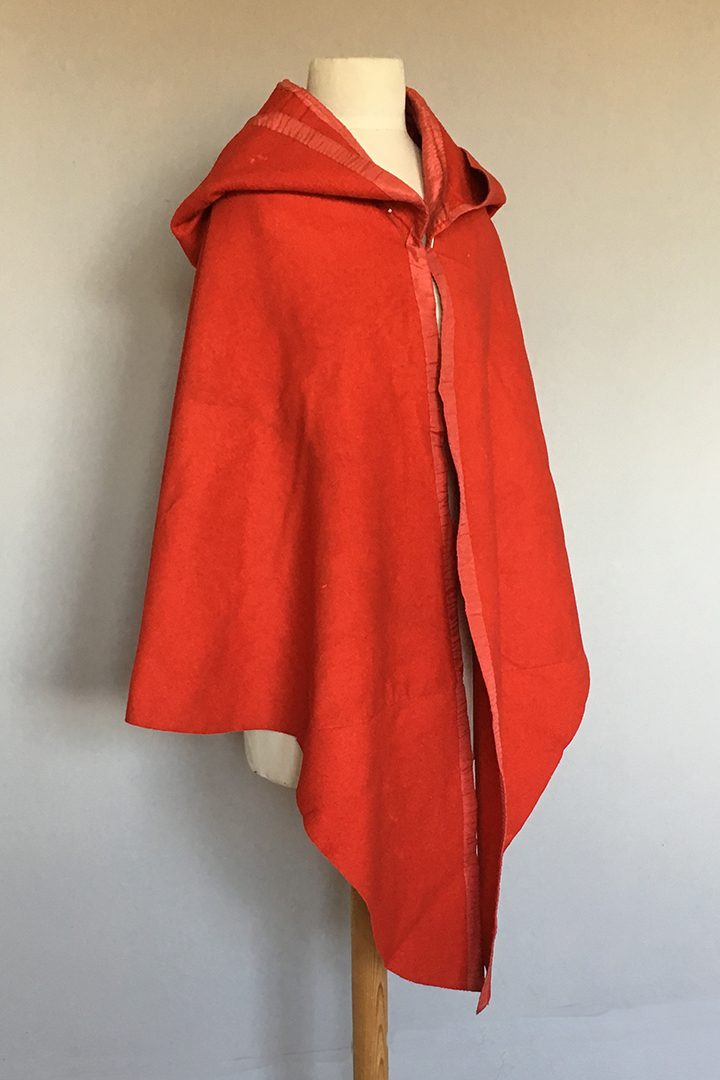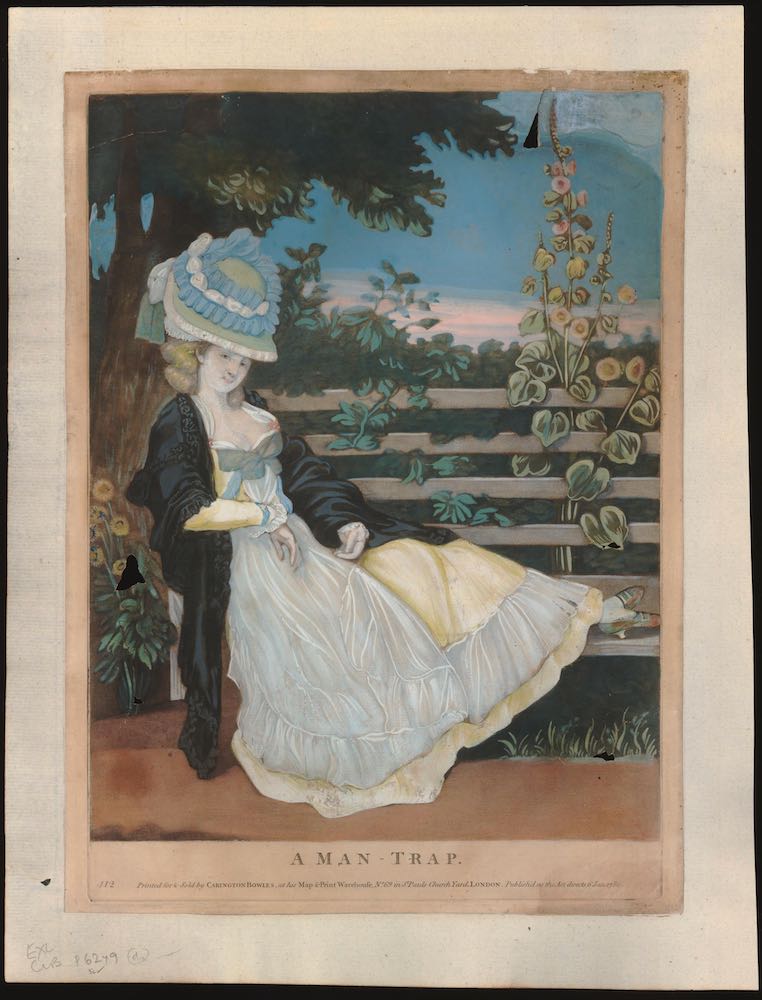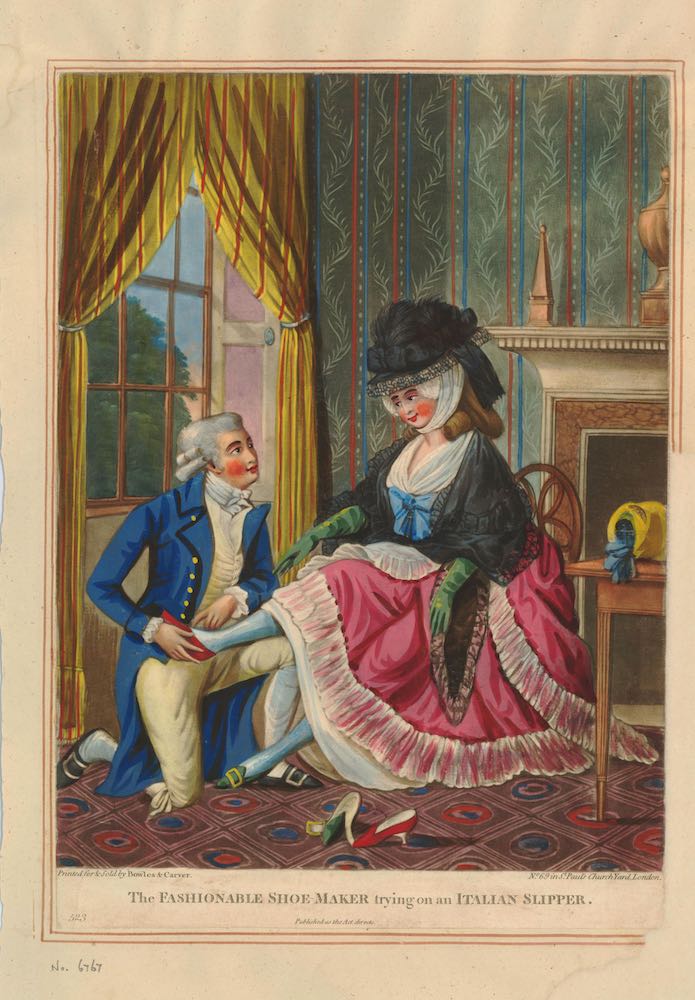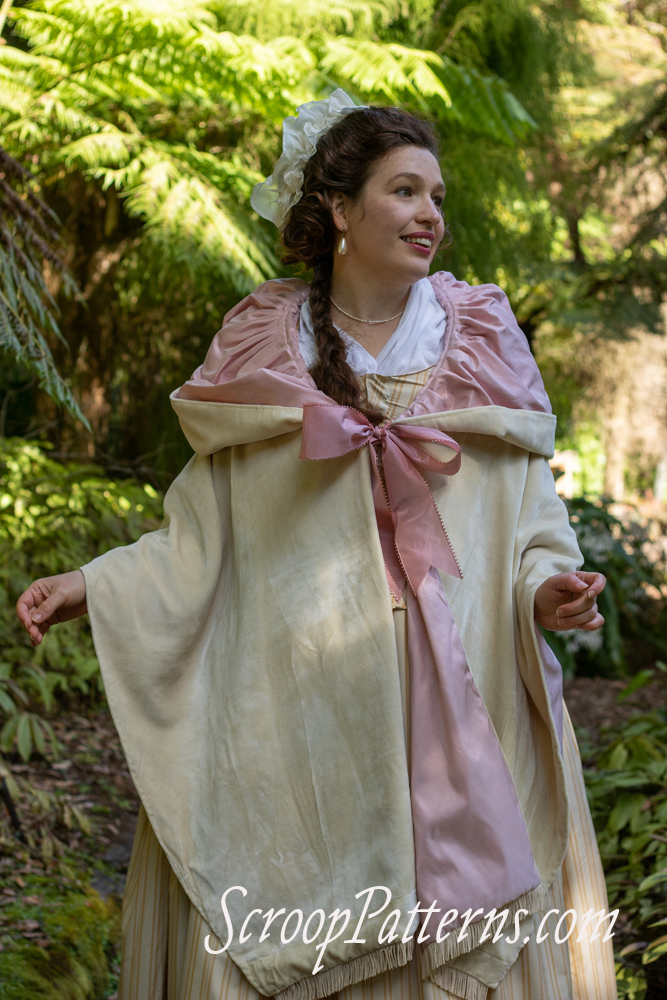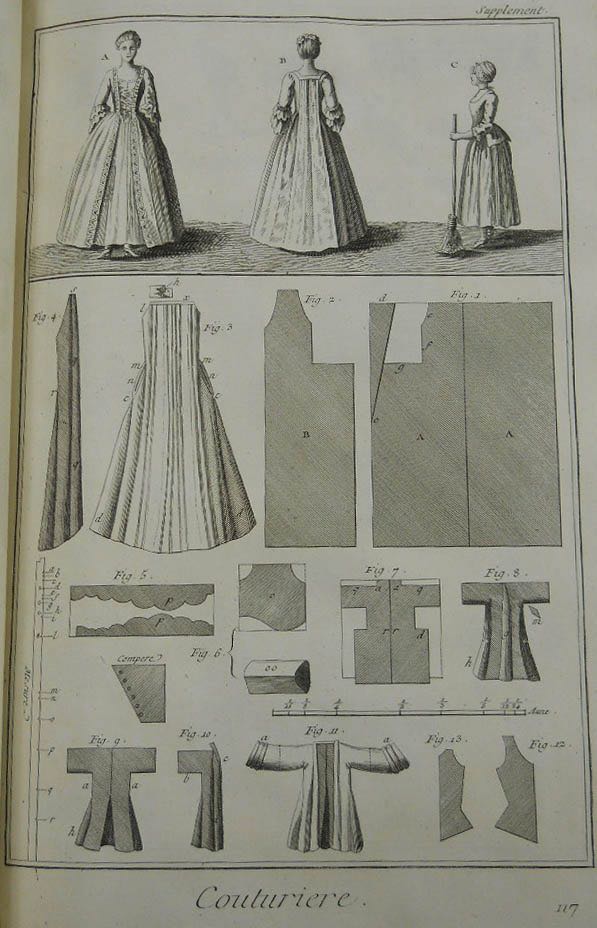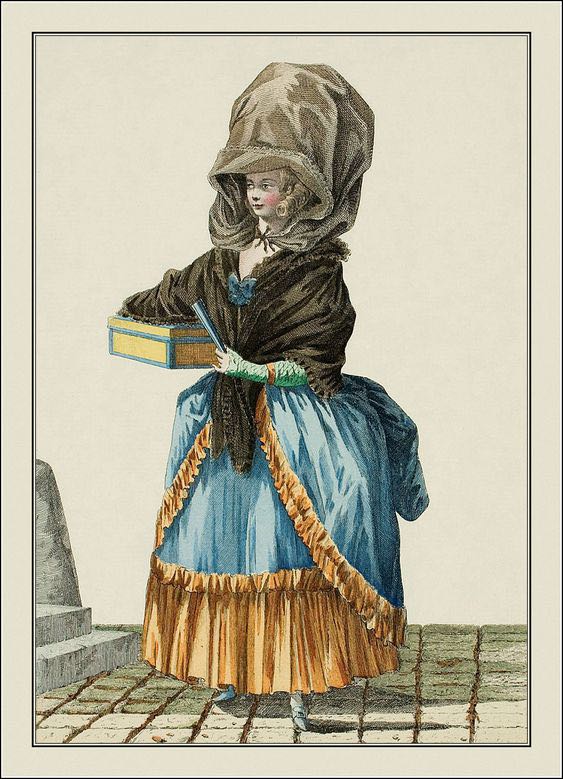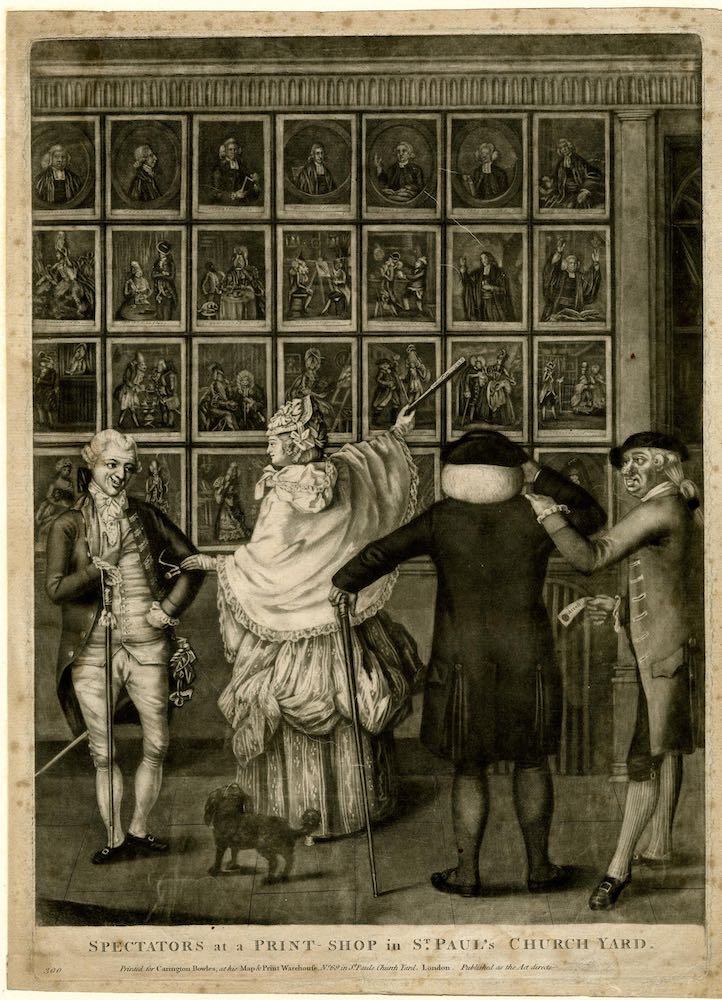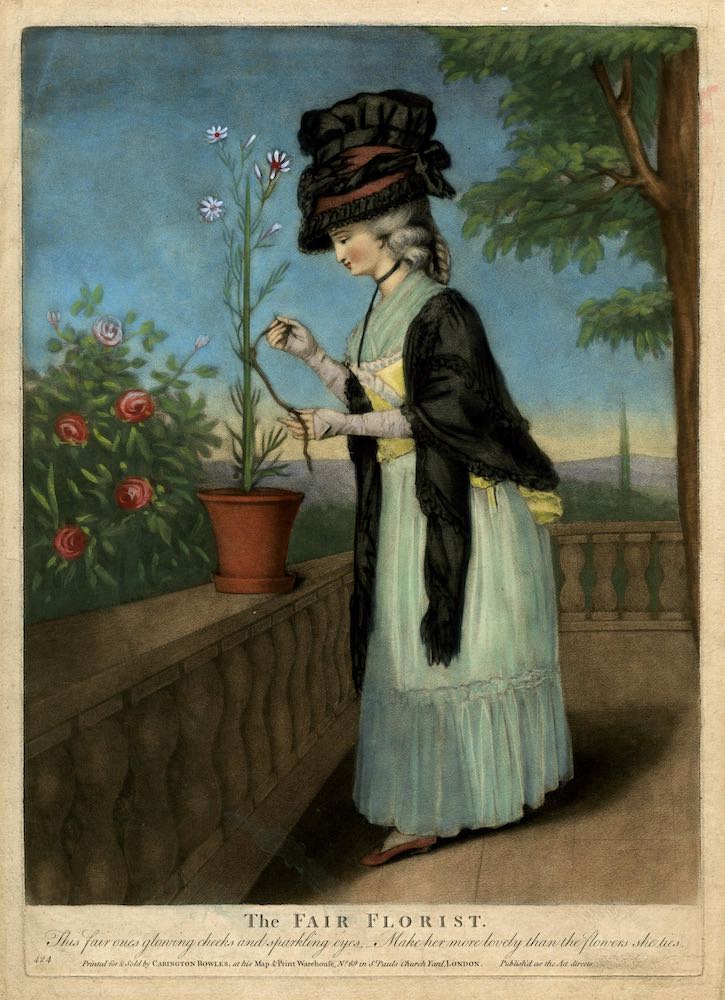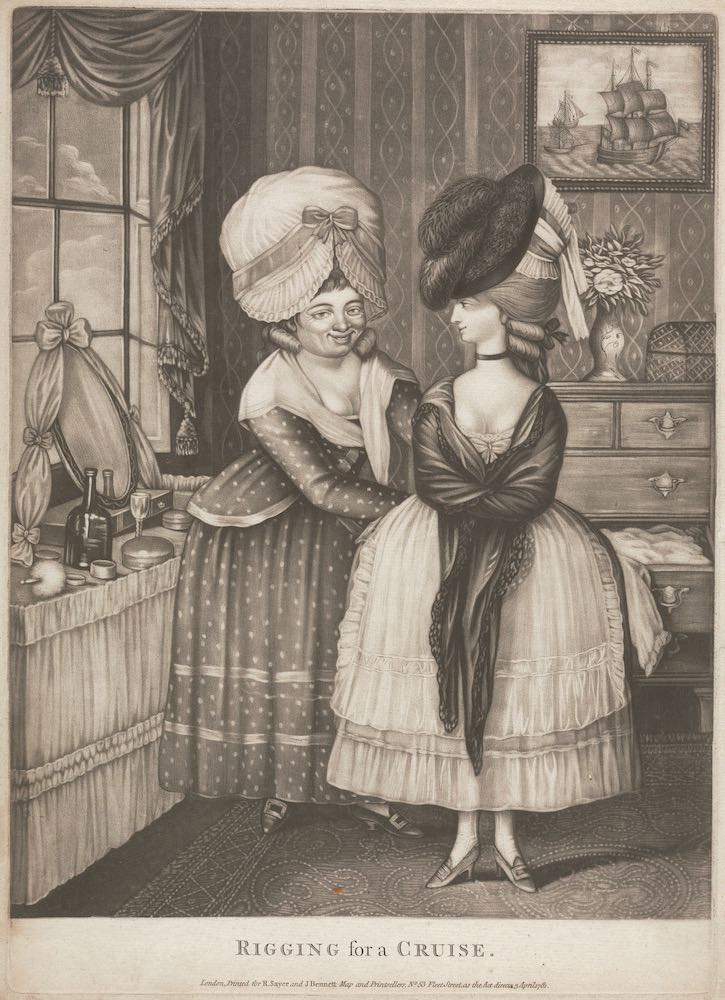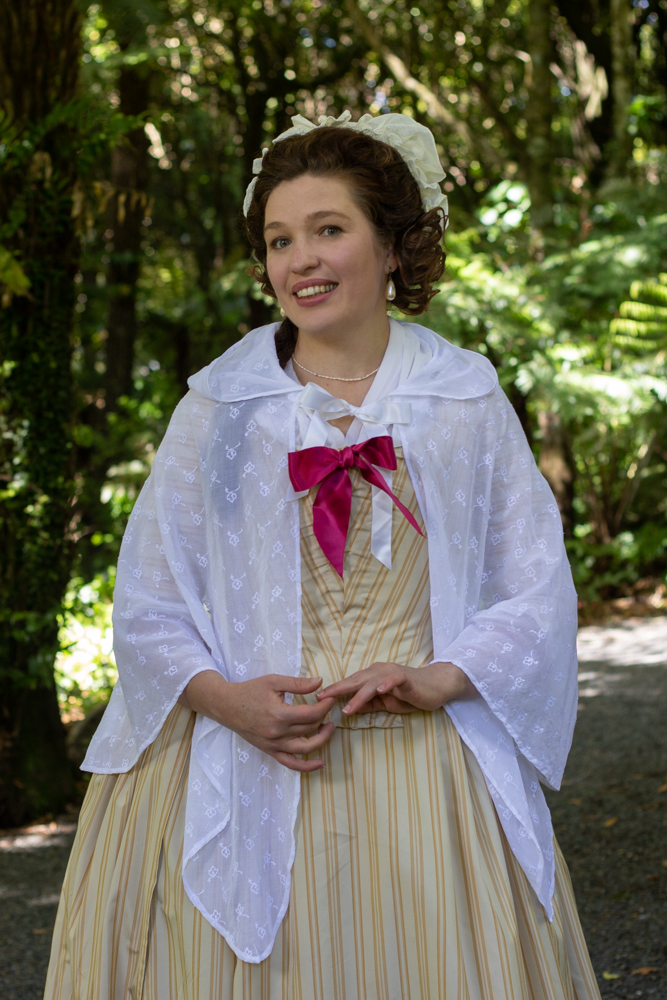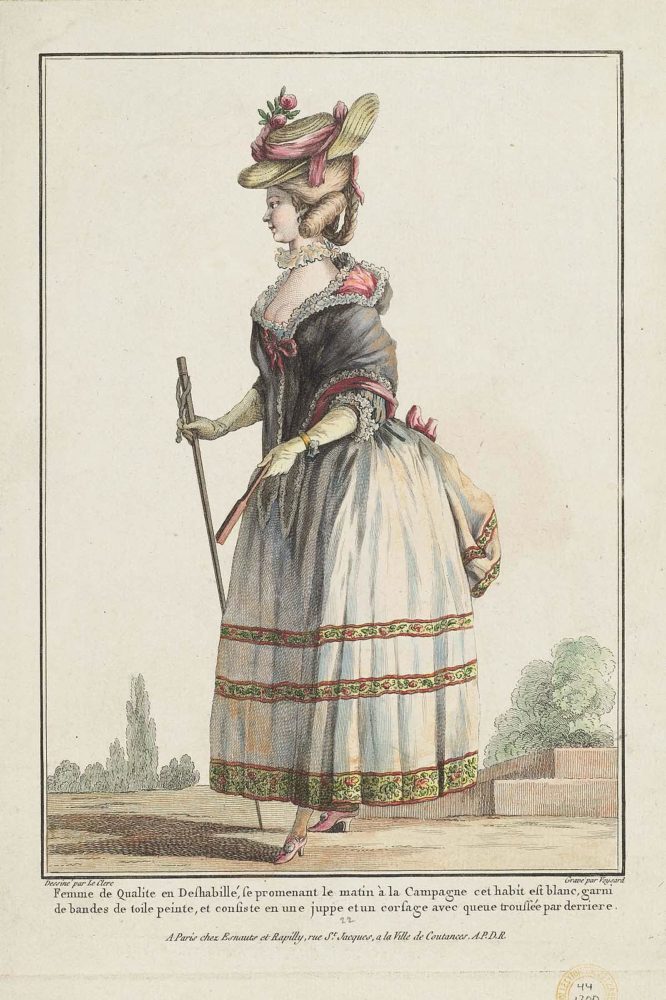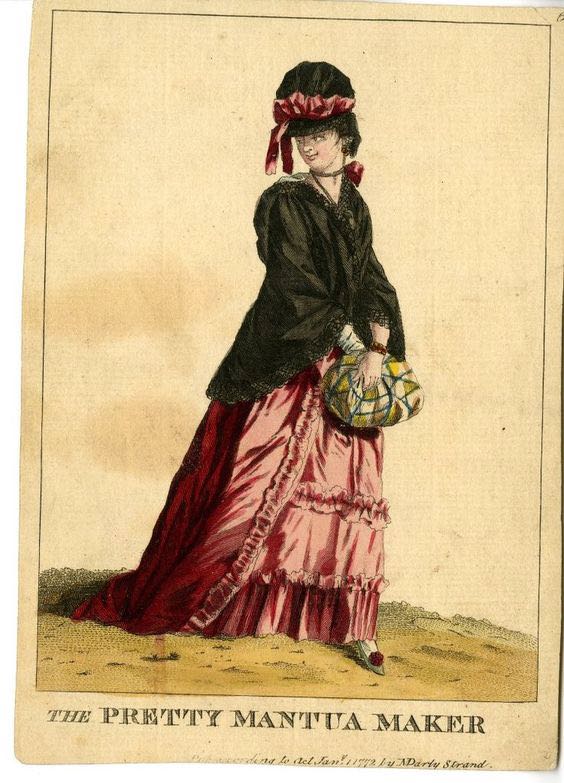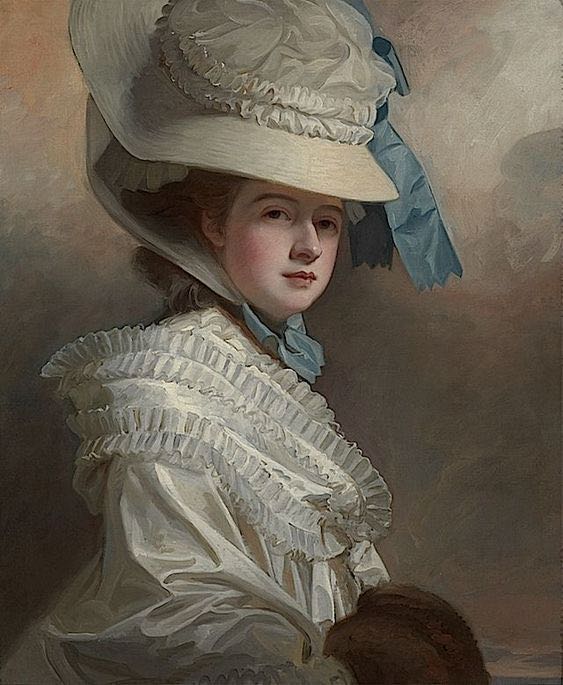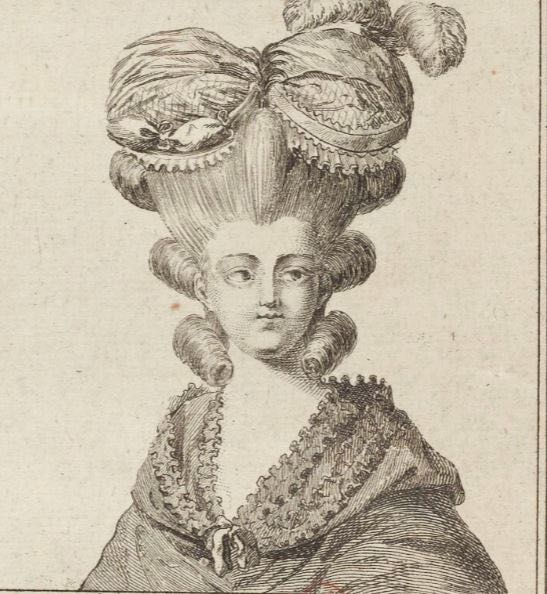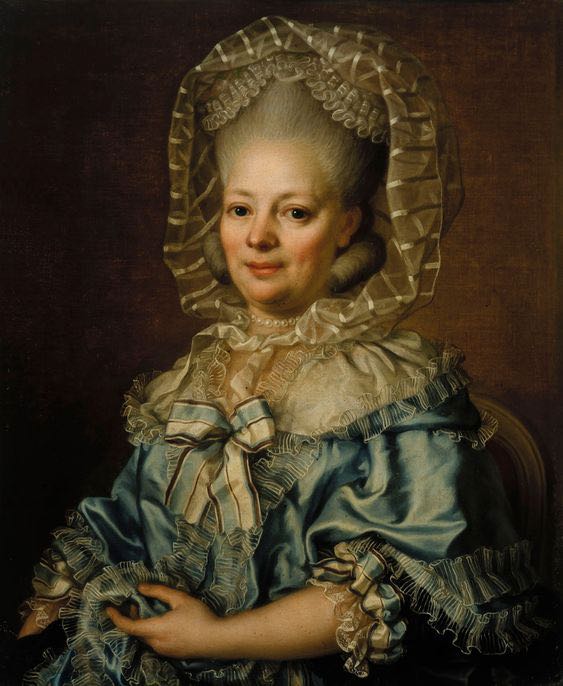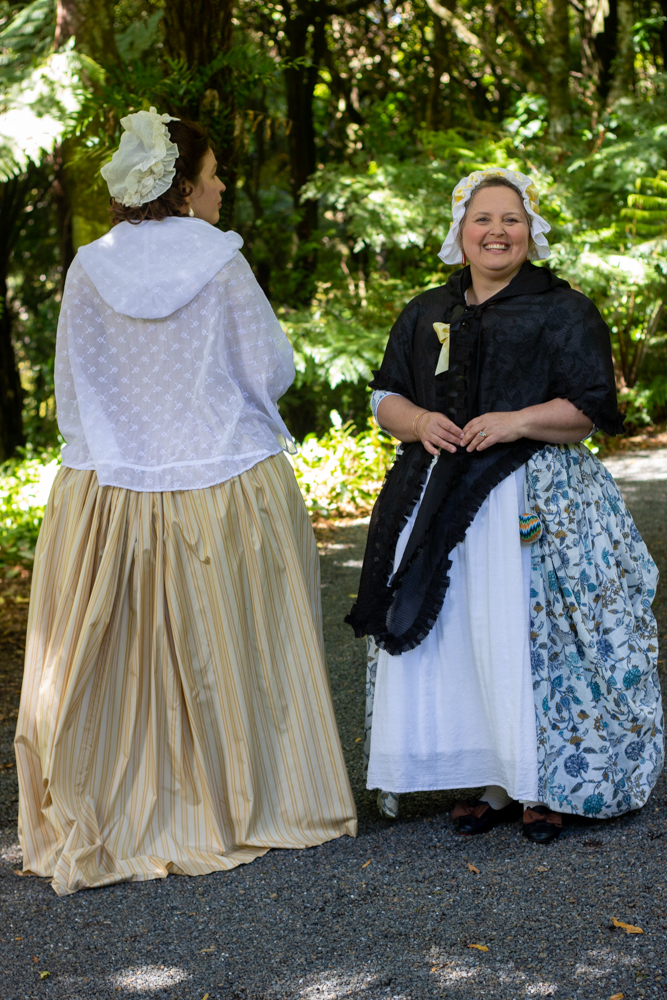Last Day the Marie, Charlotte, and Sophia patterns, and the combined pack with all three, are on sale until 11:59pm tonight, NZ Time – don’t miss out!
It’s the second of the three posts full of gorgeous test makes that I’m writing for each of the three 18th century mantle patterns. Today’s feature: the Charlotte Mantle.
Although there were three patterns, we had one test group working together, so the testers could trade techniques across views, and we could get feedback on how different elements worked together. The Charlotte testers were just as fabulous, thoughtful, detailed, fun to work with, and supportive of each other, and us, as the Marie testers.
Their fantastic feedback has helped to make the pattern just that – fantastic!
As always, we immensely grateful to the people who are willing to pattern test. Thank you so, so much!
I’ve got a confession. I find writing tester posts really difficult. I’m really bad at taking compliments (I know, I know, I’m working on it!). So I sit down to write these posts and get all gushy about how fabulous the tester makes are (because they are!), and then my brain starts worrying that the testers will be as awkward as I am about compliments and gets in a horrid loop freaking out that maybe I’m actually making them uncomfortable, but I can’t not gush, because then it wouldn’t be true…
Also, I use fabulous, fantastic, gorgeous, delightful and beautiful too often, because they are just such perfect words.
My parents, however, had the perfect reassurance for this. As my dad puts it “Don’t worry about what you write, we all just want to see the photos”. Thanks Dad!
But it’s true. You’re all just here to see the fabulous makes!
Marie-Bastienne of @lapetitesourisanimee
Marie-Bastienne was another tester who went well above and beyond and made multiple versions of the mantle pattern she tested.
First she made View A in a small floral cotton – very French! She lined it with cotton voile, and fastened it with a silk ribbon.
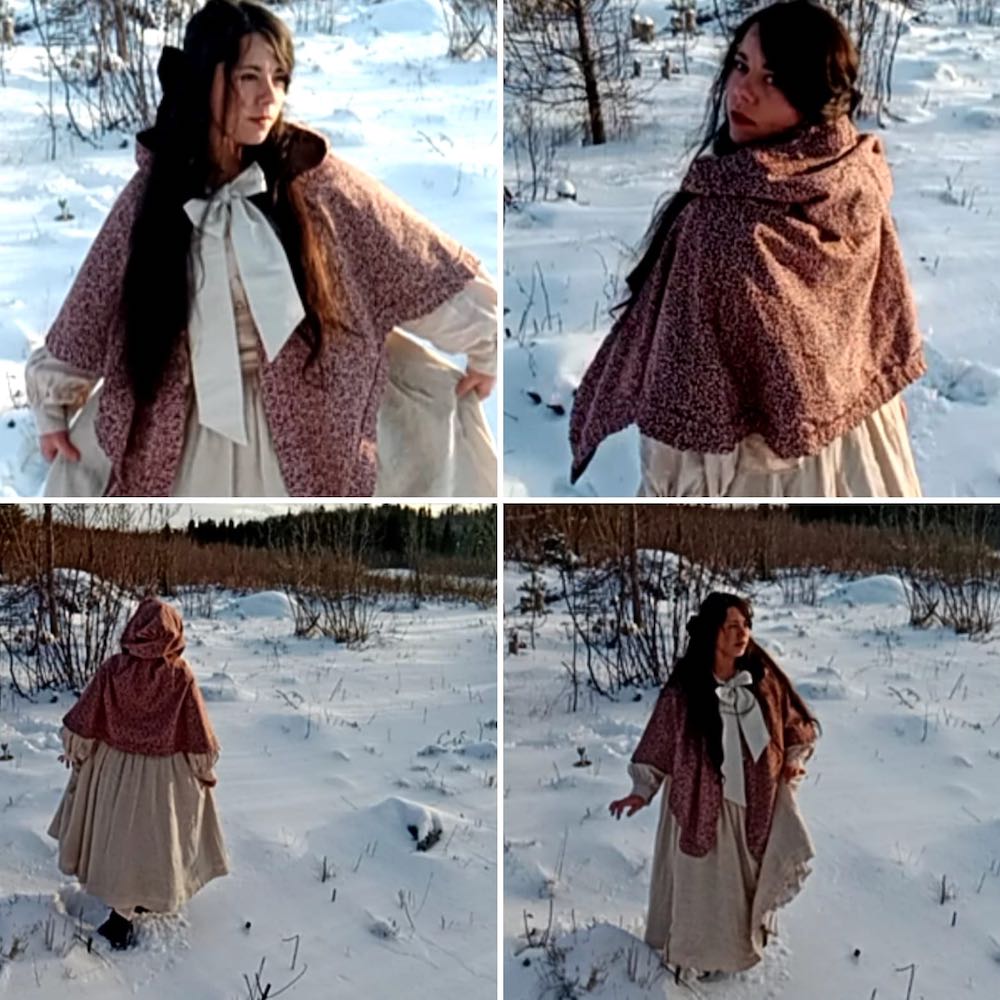
She’s styled it for a historybounding look, and it’s so adorable!
For her second mantle, she made View B in classic red wool.
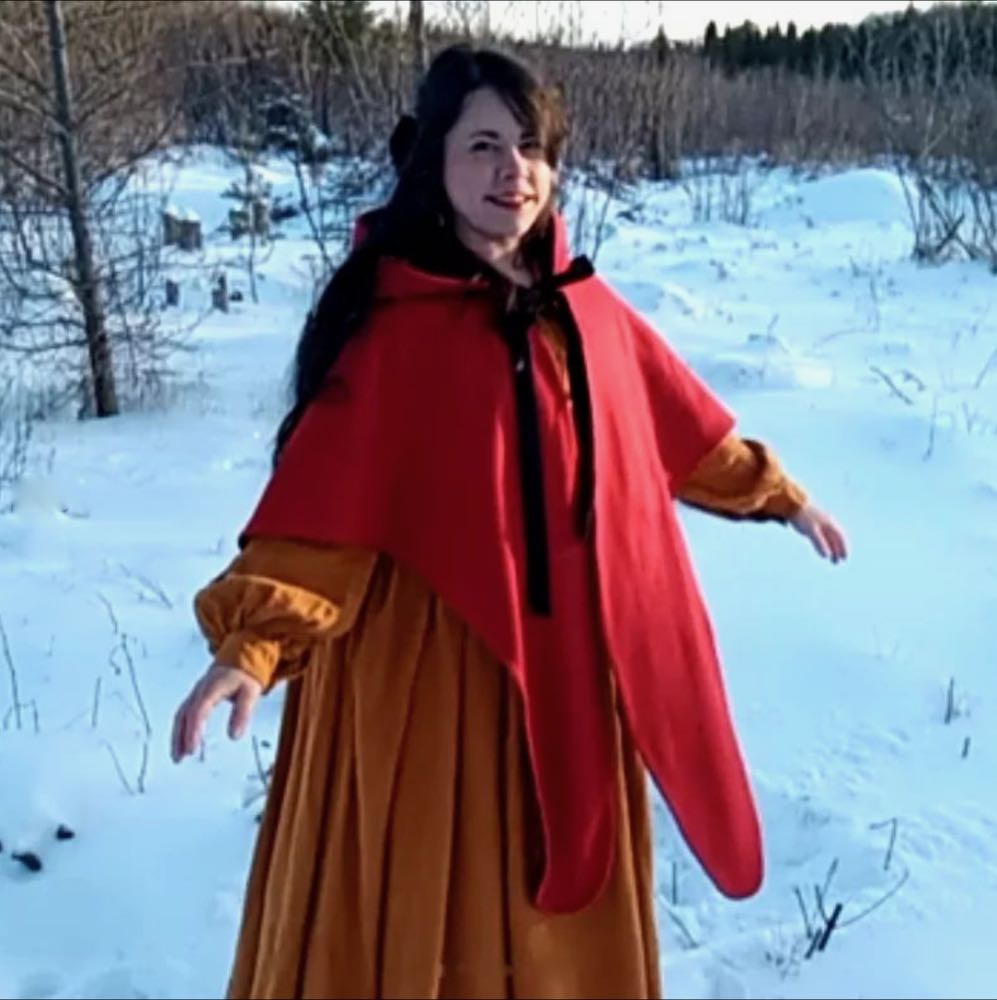
It’s the perfect winter look! So bright and cozy!
Marie made Mediums.
Emma
Emma also made two versions of the Charlotte!
First she made a goth-y View B in velvet for her daughter:

Love how this shows this isn’t only a historical garment! (and love that neck clasp she used!)
Then she made a historical View A for herself:

I absolutely love that Emma made her version as a working class mantle in very practical wool with equally practical lining and linen ties. It really shows how versatile this pattern is, and how this shape can go from 1780s high fashion to 2nd half of the 18th century and into the 19th century working class wear.
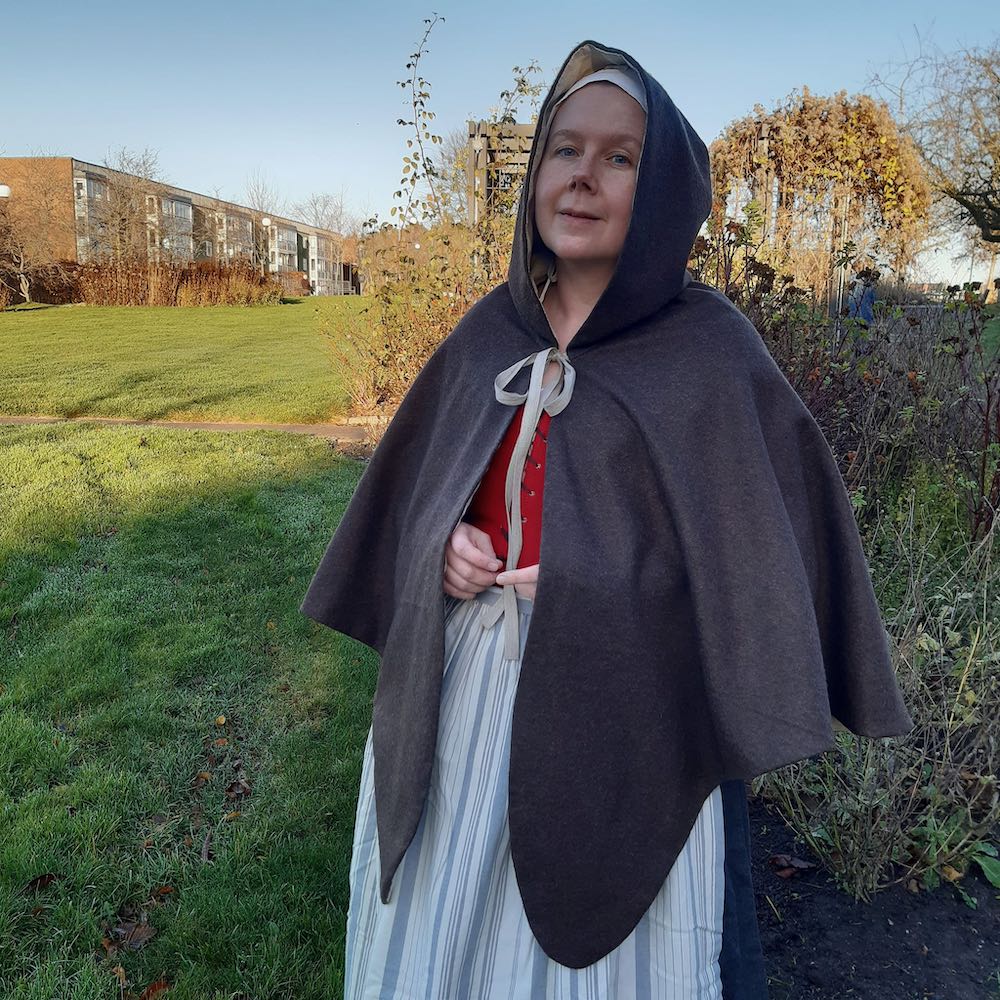
As good as Emma’s mantle looks on her, it’s equally adorable being modelled by Poppy the guinea pig in our cover photo!
Emma made her mantles in Medium.
@isabel.northwode
Speaking of 1780s high fashion mantles, Isabel made the iconic black-with-white-lining mantle that is seen in so many fashion plates of the period.
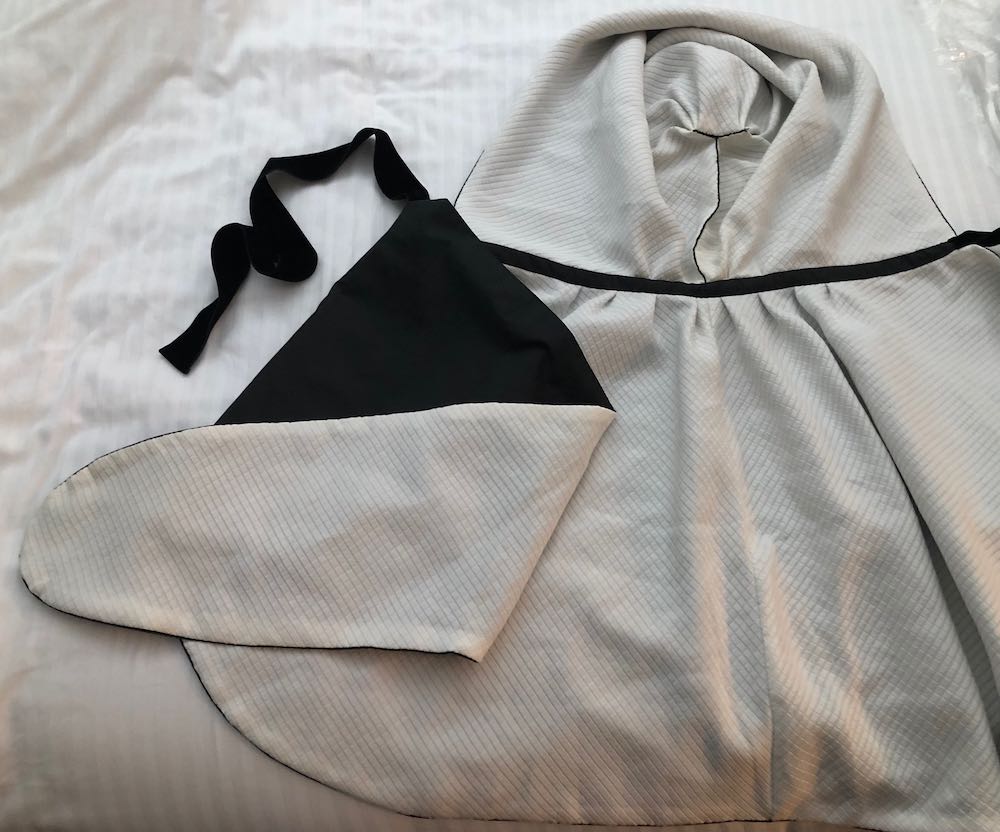
Her finishing details are just perfect. She had some things come up and wasn’t able to model it before this post, but she’s going to be adding trim and taking pictures, and I am SO excited about that, because everything Isabel makes is just sublime.
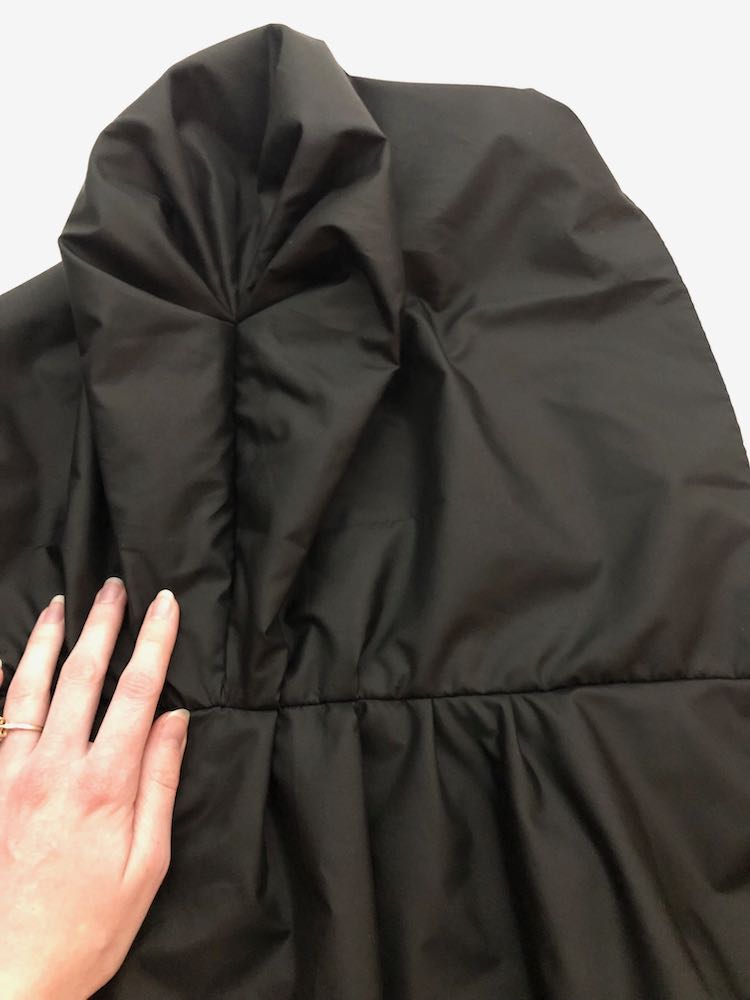
She made her View B in Small.
Alethea of @modest_modiste
From classic black and white, to classic silk taffeta. Alethea made her View B in the faaaaaaaabulous shot silk:
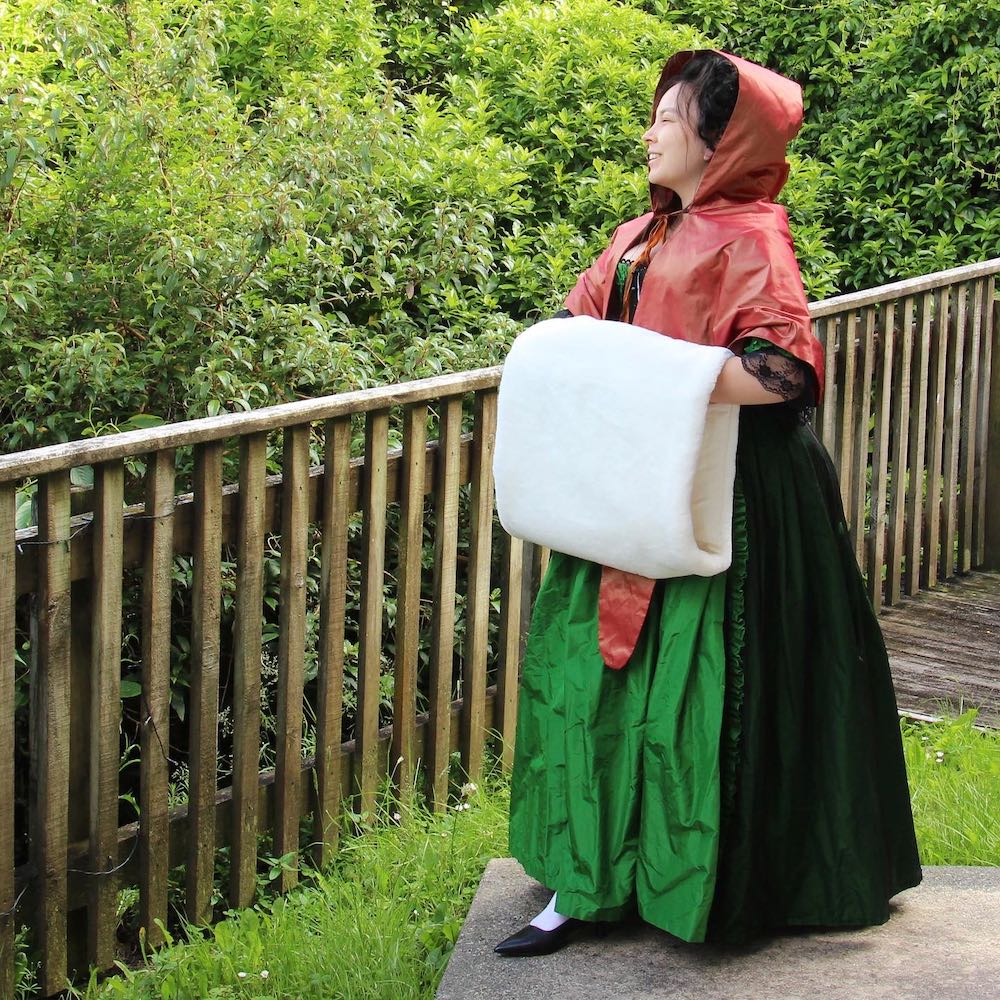
Then she braved the very muggy NZ summer to put on a full 18th century outfit (it’s a Demelza dress!), complete with ridiculously extravagant 1780s muff, to model it.
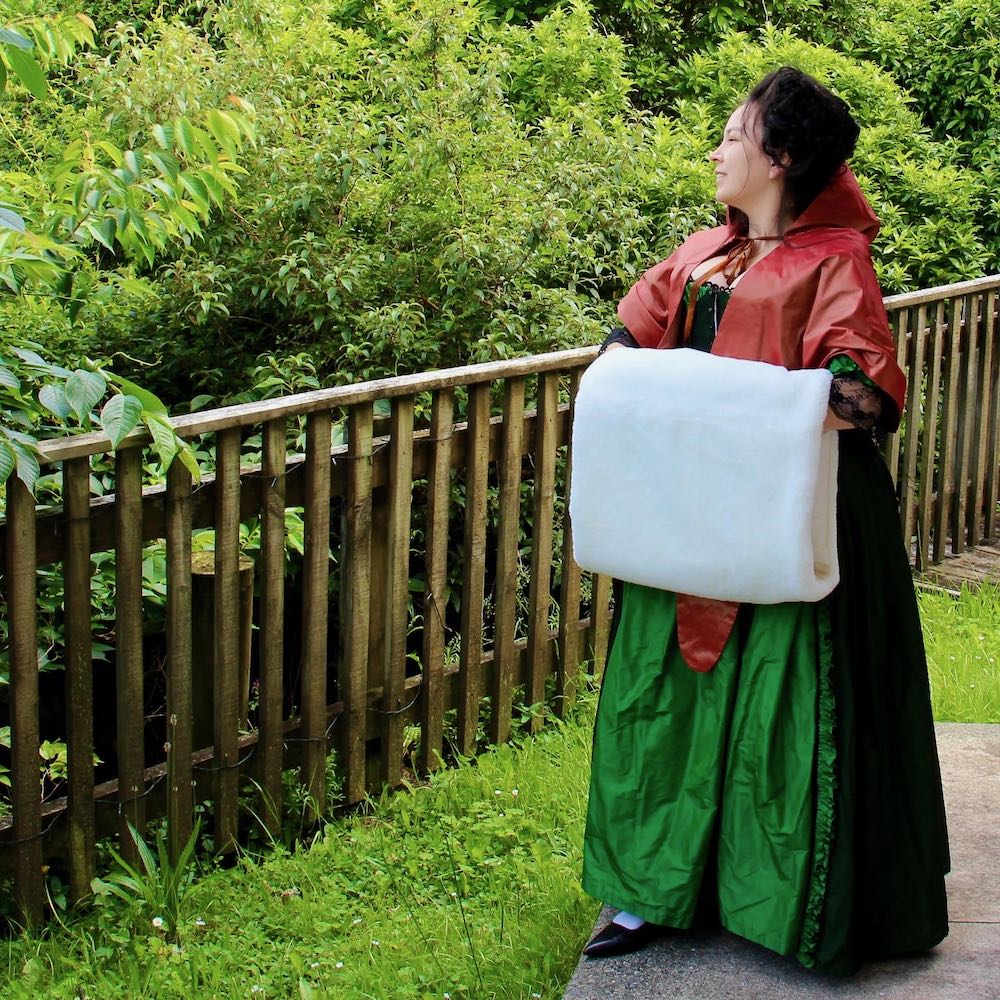
Her mantle is just gorgeous, and I live in hope that, as we’re both in NZ, I’ll get to see it in person some day.
Alethea made a Small.
Eva Bellman of @workingclassheroines
Eva chose the most beautiful mulberry wool for her Charlotte Mantle, and had fun experimenting with the construction directions to see if they could be adapted, and if other techniques would work.
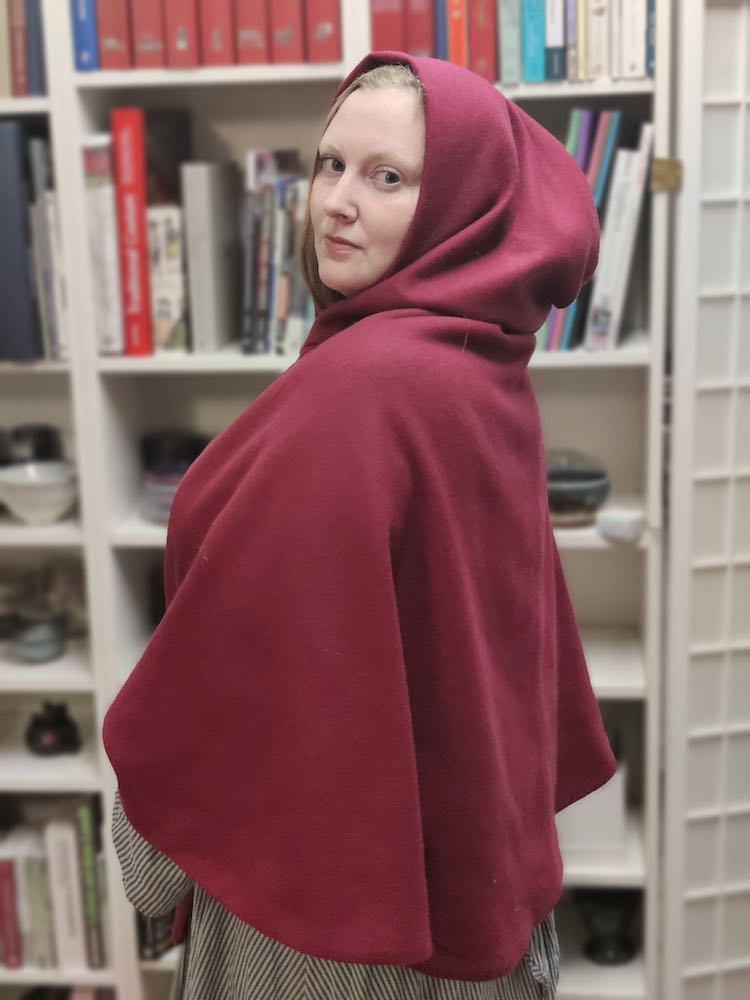
She cut her hood with the face edge on the fold, so she could just fold back the fabric to form a self lining, and not have to sew that edge.
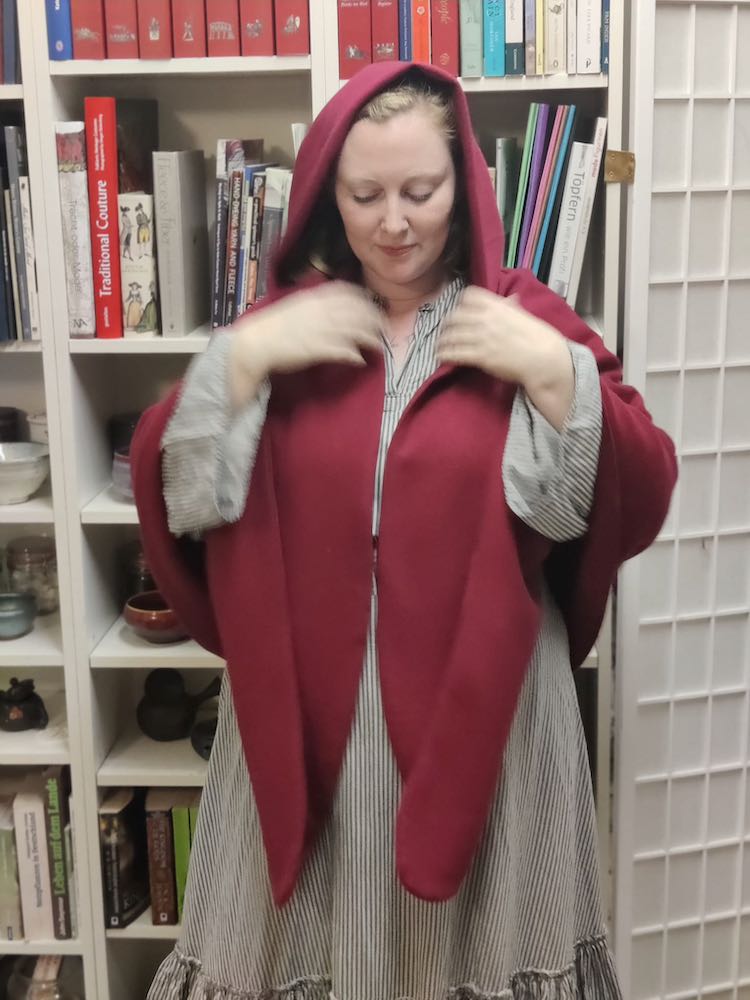
It gives a beautifully soft, unstructured look to the hood. Very cozy!
She also switched out the ribbon fastening for a tab connected by two buttons. This is such a great finish if you want to use your mantle for historybounding and modern wear.
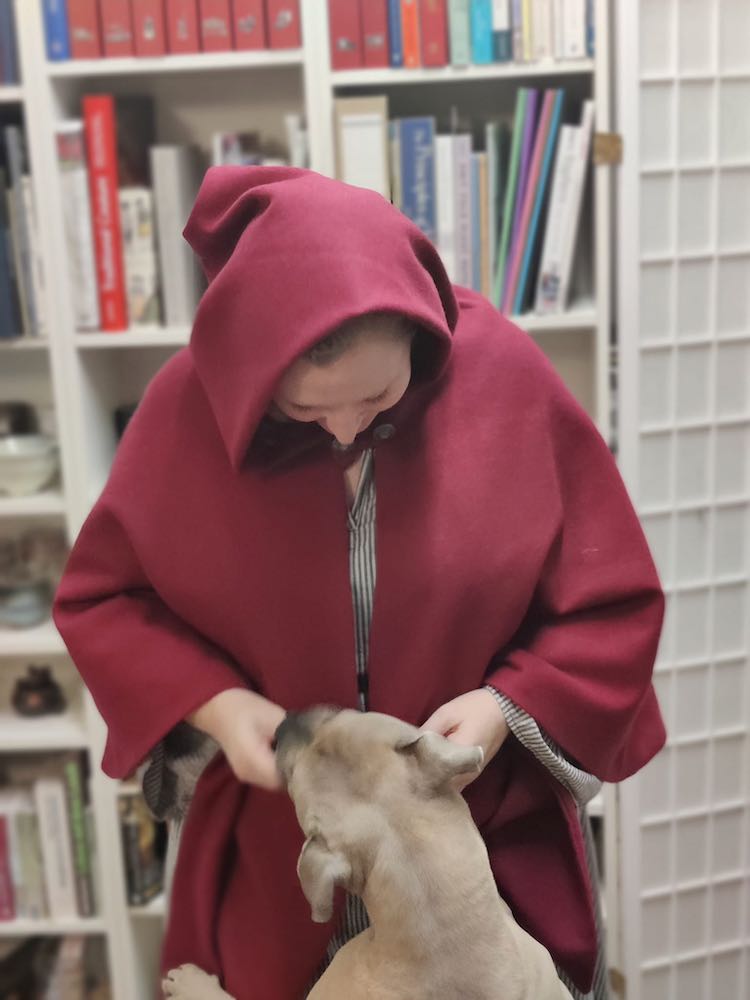
And she also treated us to a photo of her gorgeous dog. 💛
Eva made an Extra Large.
And last, but absolutely not least, I have the massive privilege of having a pattern tester who is also a model! (and one of my best friends, general co-conspirator, and my pattern editor).
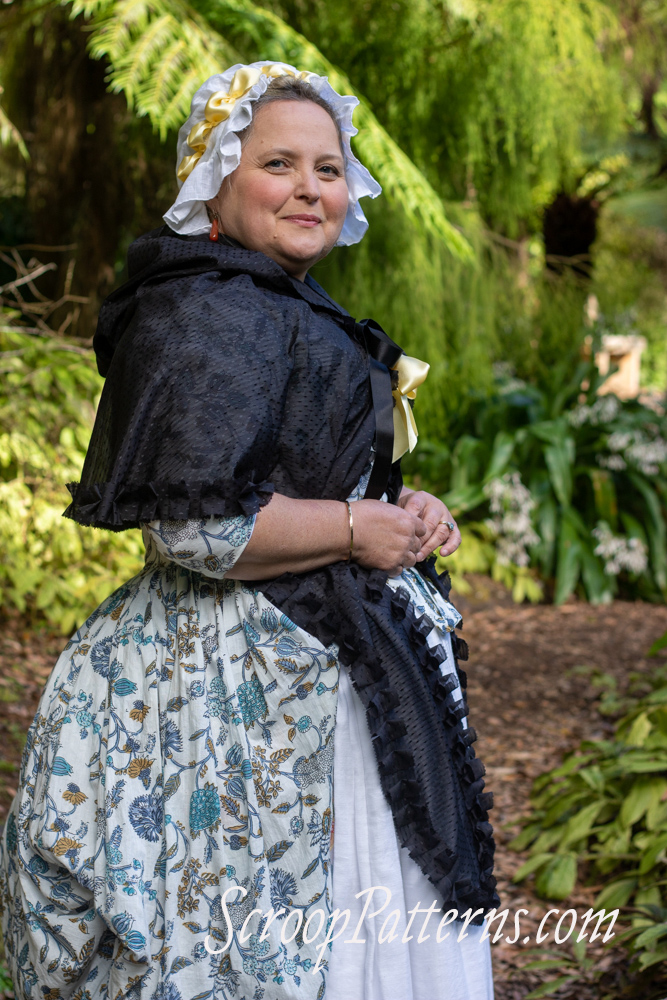
Nina made her View B Charlotte in the most beautiful silk-cotton voile with tiny dots woven in (which I may have talked her into buying 🤣). Spotted gauzes were very fashionable in the late 18th century, and a number of fashion plates show mantles made in them. So while the blend of her fabric isn’t absolutely accurate, the general aesthetic is spot-on (sorry, not sorry).
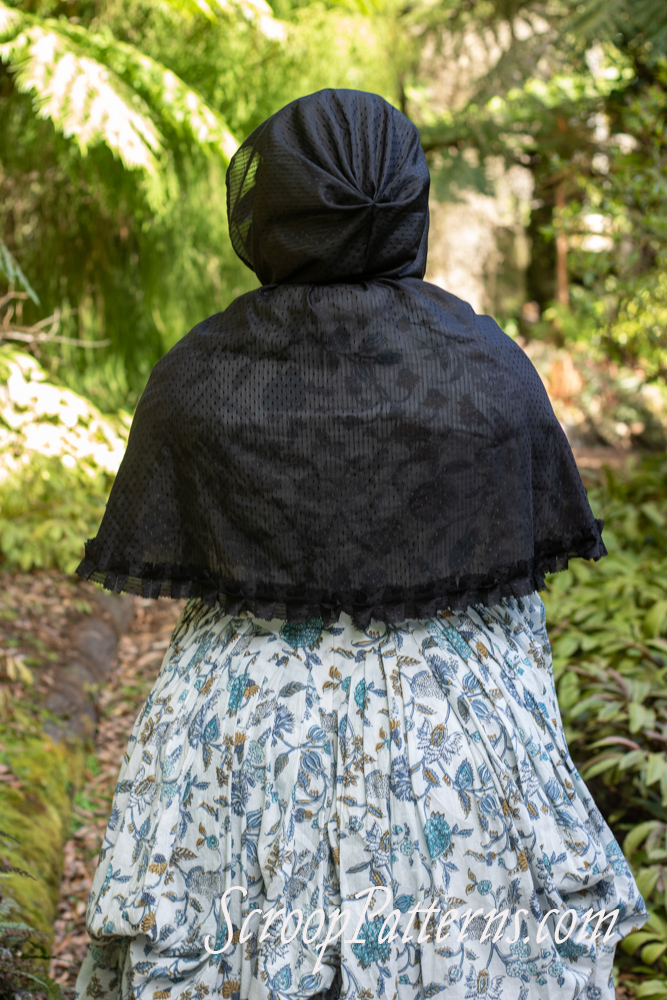
Her Charlotte mantle is just perfection, and the amount of things she checked and questioned in the pattern is hugely, hugely appreciated.
Nina made a Large.
Thank you all!
A massive, massive thank you to all the testers for all the help they provided Amber and I as pattern makers, and all the inspiration they are providing everyone.

